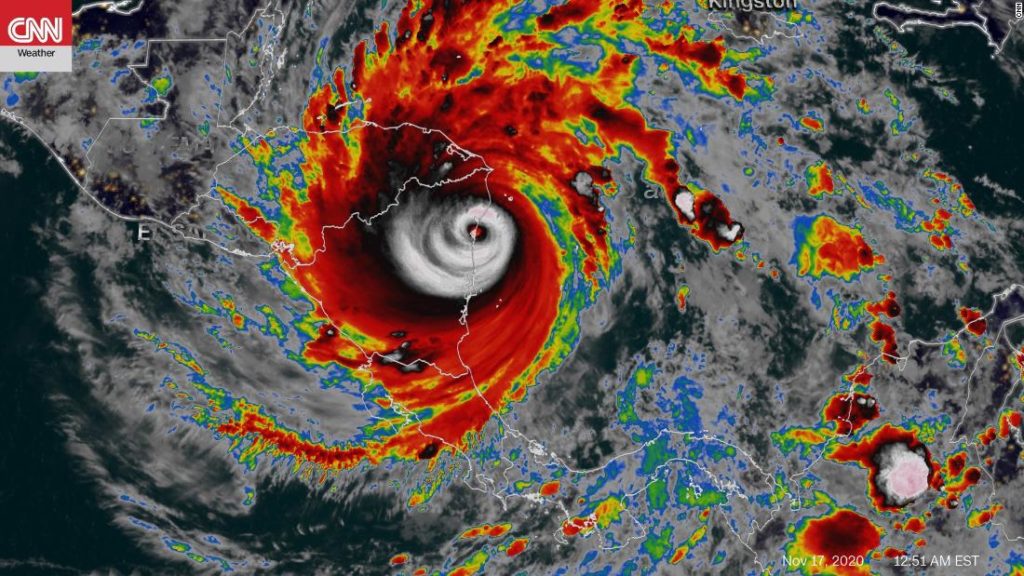The predicted storm surge along the coasts of Nicaragua and Honduras will be accompanied by “large and destructive waves,” along with swells that cause “life-threatening surf and rip current conditions,” according to the advisory.
Hurricane warnings are in effect for the coast of Nicaragua from its border with Honduras to Sandy Bay Sirpi, as well as the coast of northeastern Honduras, the NHC said. Tropical storm warnings are also in place for Providencia, San Andreas and Bay Islands.
Though the storm struck Central America with devastating impact, it is expected to weaken after landfall and then dissipate over the region by Wednesday night.
Colombian Islands feel the first impacts
San Andres and Providencia have been part of Colombia for centuries but are geographically closer to Central America than to the Colombian mainland.
At least one person is dead on Providencia and 90% of the island’s infrastructure has been affected by Iota, Duque said Monday. The local airport is also unusable because of debris.
“It’s the first time that a Category 5 Hurricane has reached our territory since records began,” Duque said during a national news conference from the Colombian capital of Bogota. “We are facing an issue with characteristics never before witnessed by our country.”
A Navy boat was scheduled to depart Cartagena on Monday night on its way to Providencia with supplies, Duque said.
Central America still recovering from Eta
More than 3.6 million people across Central America have been affected by the storm to varying degrees, the Red Cross said earlier this week.
While the full extent of the damage from Eta won’t be known for a while, the powerful storm, combined with the coronavirus pandemic, may have effects that last for years.
The storm hovered for days over Nicaragua, Honduras and Guatemala, with heavy rains creating flooding and landslides that wiped entire communities off the map.
Dozens of people in the remote Guatemalan village of San Cristobal remain missing after a landslide swept through last week, leaving mud 50 feet deep in some places.
CNN’s Hollie Silverman, Gene Norman and Robert Shackelford contributed to this report.
You may also like
-
UK coronavirus variant has been reported in 86 countries, WHO says
-
NASA technology can help save whale sharks says Australian marine biologist and ECOCEAN founder, Brad Norman
-
California Twentynine Palms: Explosives are missing from the nation’s largest Marine Corps base and an investigation is underway
-
Trump unhappy with his impeachment attorney’s performance, sources say
-
Lunar New Year 2021: Ushering in the Year of the Ox

